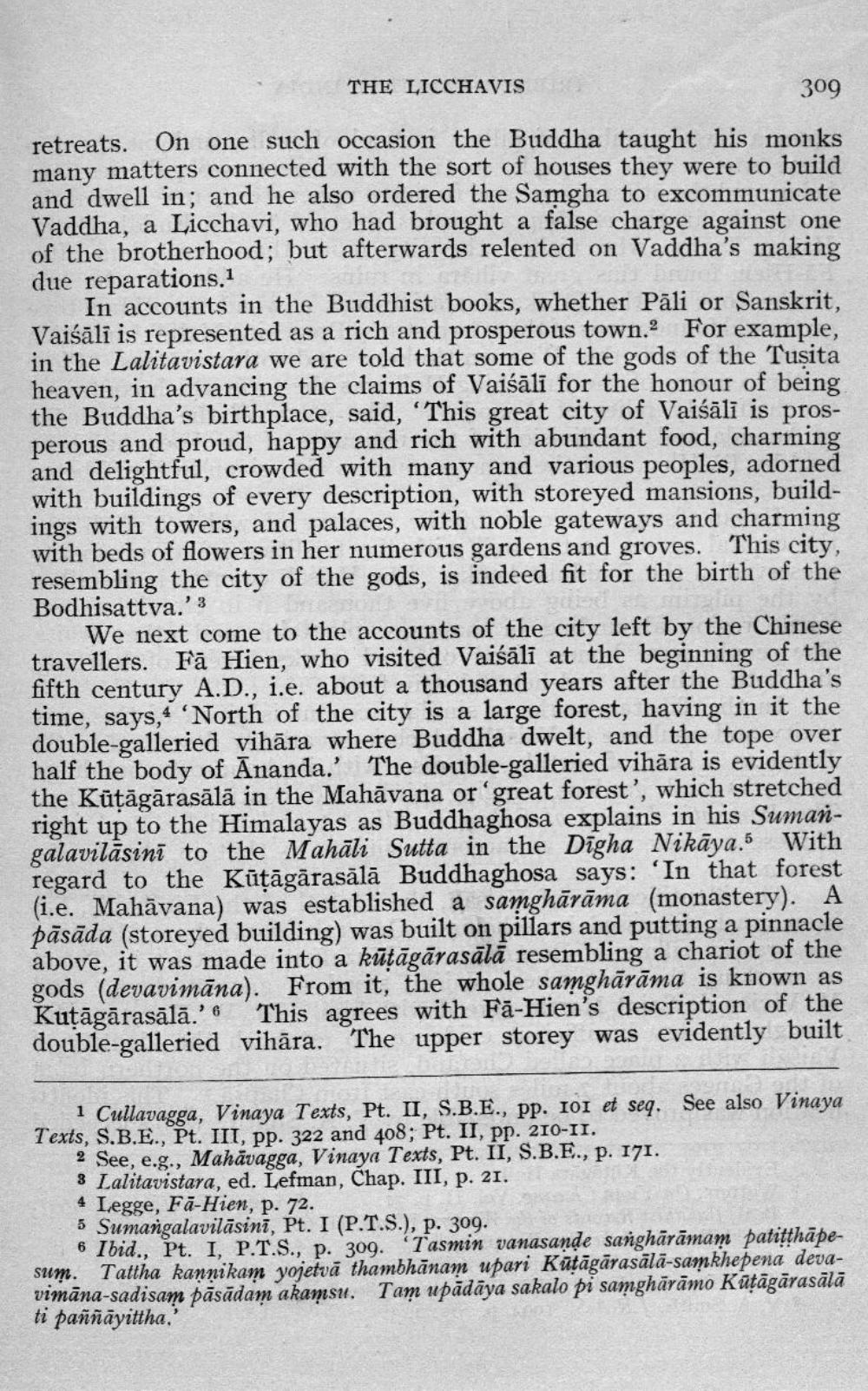________________
THE LICCHAVIS
309 retreats. On one such occasion the Buddha taught his monks many matters connected with the sort of houses they were to build and dwell in; and he also ordered the Samgha to excommunicate Vaddha, a Licchavi, who had brought a false charge against one of the brotherhood; but afterwards relented on Vaddha's making due reparations.1
In accounts in the Buddhist books, whether Pāli or Sanskrit, Vaiśāli is represented as a rich and prosperous town.2 For example, in the Lalitavistara we are told that some of the gods of the Tusita heaven, in advancing the claims of Vaiśālī for the honour of being the Buddha's birthplace, said, 'This great city of Vaiśālī is prosperous and proud, happy and rich with abundant food, charming and delightful, crowded with many and various peoples, adorned with buildings of every description, with storeyed mansions, buildings with towers, and palaces, with noble gateways and charming with beds of flowers in her numerous gardens and groves. This city, resembling the city of the gods, is indeed fit for the birth of the Bodhisattva.'3
We next come to the accounts of the city left by the Chinese travellers. Fā Hien, who visited Vaiśāli at the beginning of the fifth century A.D., i.e. about a thousand years after the Buddha's time, says, 'North of the city is a large forest, having in it the double-galleried vihāra where Buddha dwelt, and the tope over half the body of Ānanda.' The double-galleried vihāra is evidently the Kūtāgārasālā in the Mahāvana or great forest', which stretched right up to the Himalayas as Buddhaghosa explains in his Sumangalavilāsinī to the Mahāli Sutta in the Digha Nikāya. With regard to the Kūtāgārasālā Buddhaghosa says: 'In that forest (i.e. Mahāvana) was established a samghārāma (monastery). A pāsāda (storeyed building) was built on pillars and putting a pinnacle above, it was made into a kūtāgārasālā resembling a chariot of the gods (devavimāna). From it, the whole samghārāma is known as Kuţāgārasālā.'c This agrees with Fá-Hien's description of the double-galleried vihāra. The upper storey was evidently built
1 Cullavagga, Vinaya Texts, Pt. II, S.B.E., pp. 101 et seq. See also Vinaya Texts, S.B.E., Pt. III, pp. 322 and 408; Pt. II, pp. 210-II.
2 See, e.g., Mahāvagga, Vinaya Texts, Pt. II, S.B.E., p. 171. 3 Lalitavistara, ed. Lefman, Chap. III, p. 21. 4 Legge, Fā-Hien, p. 72. 5 Sumangalavilāsinī, Pt. I (P.T.S.), p. 309.
6 Ibid., Pt. I, P.T.S., p. 309. "Tasmin vanasande sanghārāmam patitthāpesum. Tattha kannikam pojetvā thambhānam upari Kütāgārasālā-samkhepena devavimāna-sadisam pāsādam akamsu. Tam upādāya sakalo pi samghārāmo Kātāgārasālā ti paññāyittha.'




